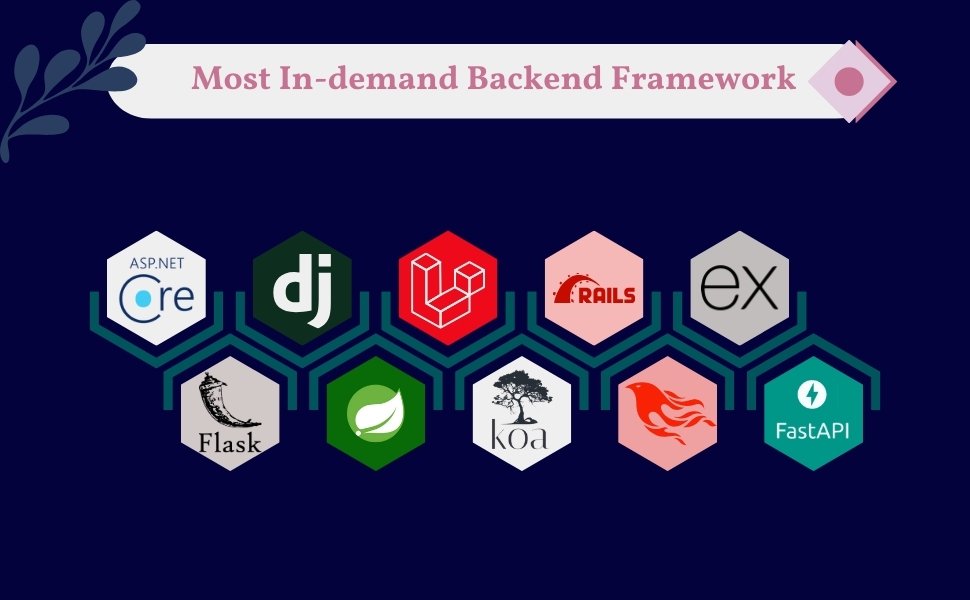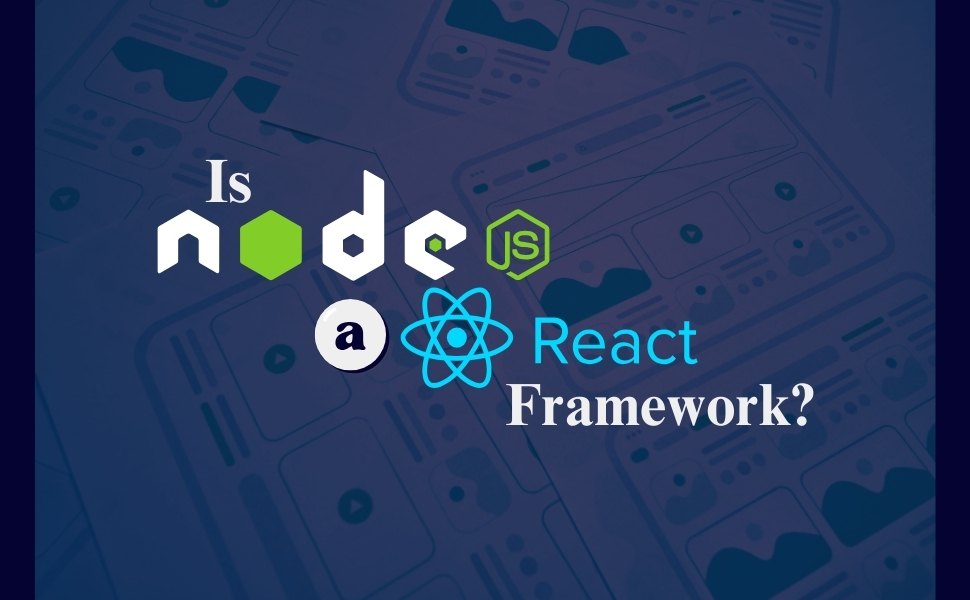Backend frameworks are the backbone of modern applications. They handle the heavy lifting behind the scenes—processing data, managing servers, and ensuring everything runs smoothly.
With so many options available, it’s essential to focus on backend frameworks that are not just popular but also in demand. These frameworks play a crucial role in delivering fast, responsive websites, which directly impacts user experience. Whether you’re building a dynamic web app or scaling a business, choosing the right framework is essential for performance and scalability.
In this guide, we’ll explore the most in-demand backend frameworks, their unique strengths, and how to choose the right one for your next project.
What are Back-End Frameworks?
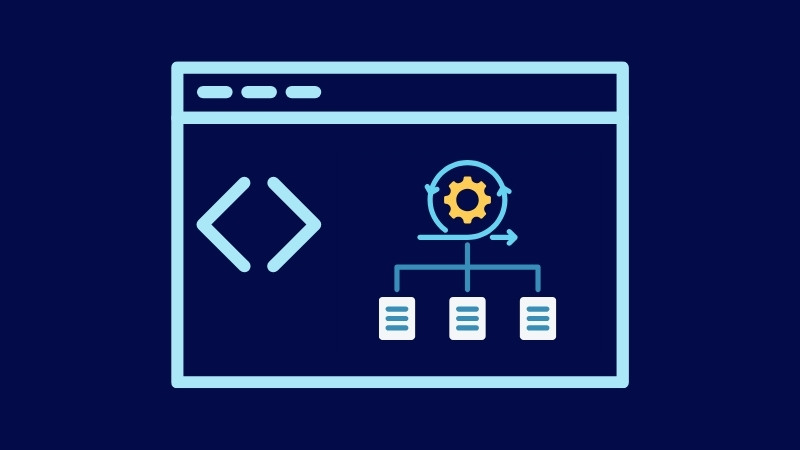
Backend frameworks are tools that help developers create and manage the server-side of websites and applications, including databases, servers, and application logic. Everything that happens behind the scenes. They simplify tasks like fetching data, logging in users, and processing payments, making development faster and more organized.
These frameworks come with pre-written code, libraries, and templates, saving time by handling repetitive tasks like routing, data management, and security.
Built using popular programming languages like Python, Java, PHP, and JavaScript, backend frameworks shape how developers build robust server-side systems. If you’re curious about how backend development differs from frontend development, check out this guide on Frontend vs. Backend Web Development.
Benefits of Using a Back-End Framework
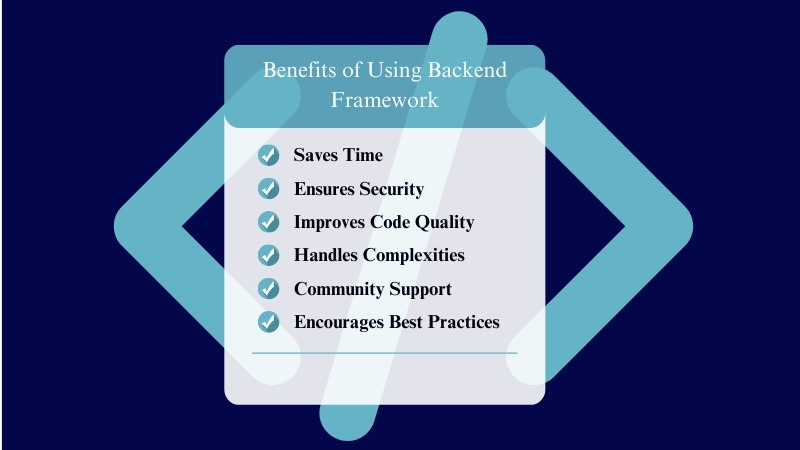
Using a trending backend framework makes web and app development faster and easier. It provides tools and pre-written code to handle common tasks, so developers don’t have to start from scratch. Here are some key benefits—
1. Saves Time
Frameworks speed up the development process. They include ready-to-use features like routing, authentication, and database management, helping developers focus on building unique parts of the app.
2. Ensures Security
Many frameworks come with built-in security features. They help protect applications from common threats like SQL injection and cross-site scripting, keeping user data safe.
3. Improves Code Quality
Frameworks promote clean, organized, and reusable code. This makes projects easier to maintain and update over time.
4. Handles Complexities
Developing scalable and high-performance apps can be challenging. Frameworks simplify this by managing complexities like load balancing, caching, and server communication. To learn more about optimizing backend performance, check out this guide on backend optimization strategies.
5. Community Support
Popular backend frameworks have large communities of developers. This means plenty of resources, tutorials, and support when you need help.
6. Encourages Best Practices
Frameworks are designed with best coding practices in mind. They encourage developers to follow standards, resulting in efficient and professional applications.
Top Factors Making a Backend Framework In Demand
Most in-demand backend frameworks meet the evolving needs of modern development. They must handle growing traffic, integrate with the latest tools, and stay aligned with industry trends. Developers and businesses prefer top frameworks that are reliable, versatile, and backed by strong community support. Here are the key factors—
- Scalability and Performance: Handles high traffic and complex tasks without slowing down. This is a crucial aspect of backend technologies for scalability.
- Ease of Integration: Works seamlessly with modern tools, APIs, and databases, supporting trending development practices.
- Strong Community Support: Offers resources, plugins, and active developer help, making it easier to learn and troubleshoot.
- Versatility: Adapts to various projects like APIs, microservices, or full-stack applications, which are highly sought after in the job market demand for backend frameworks.
- Trend Alignment: Supports serverless architectures, containerization, and cloud-native development, keeping up with trending backend frameworks.
Read More: How to Write a Website Design RFP?
List of the Most In-Demand Backend Frameworks (2025)
Here’s a detailed breakdown of the most in-demand backend frameworks of 2025, their unique features, and why they’re popular—
1. ASP.NET Core
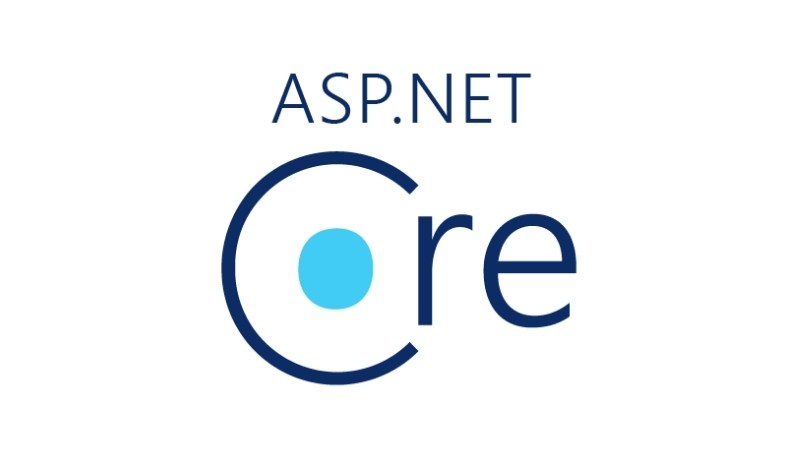
ASP.NET Core is a high-performance, open-source, and cross-platform framework developed by Microsoft. It’s designed for building modern web applications, APIs, and cloud-based services. Known for its flexibility and scalability, ASP.NET Core is widely used in industries requiring secure and robust solutions. It supports multiple platforms, making it a preferred choice among popular backend frameworks for enterprise-grade applications.
If you’re curious about how .NET Core fits into the backend development landscape, this guide on .NET Core as backend or frontend provides helpful insights into the broader .NET ecosystem.
Industries/Use Cases
ASP.NET Core is highly versatile and excels in industries where reliability and scalability are critical—
- Enterprise Applications
- Fintech
- E-commerce
- Healthcare Systems
Market Demand
ASP.NET Core is highly demanded in corporate environments due to Microsoft’s dominance in the enterprise world. It remains one of the most in-demand backend frameworks for its performance, security, and seamless integration with Microsoft services like Azure.
Popular Apps: Stack Overflow, Dell, GoDaddy.
When to Use
Choose ASP.NET Core for—
- Large-Scale Projects: Handles complex applications and high traffic.
- Enterprise Solutions: Ideal for integrating with Microsoft’s ecosystem.
- Cloud-Based Apps: Optimized for cloud-native development.
Key Features
- Cross-Platform Compatibility
- Built-In Dependency Injection
- Azure Integration
- High Performance
- Unified Development
Pros and Cons
| Pros | Cons |
|---|---|
| Fast performance | Steep learning curve for beginners |
| Built-in security features | Microsoft Dependency |
| Reliable, with Microsoft support | |
| Scalable for growing applications |
2. Django
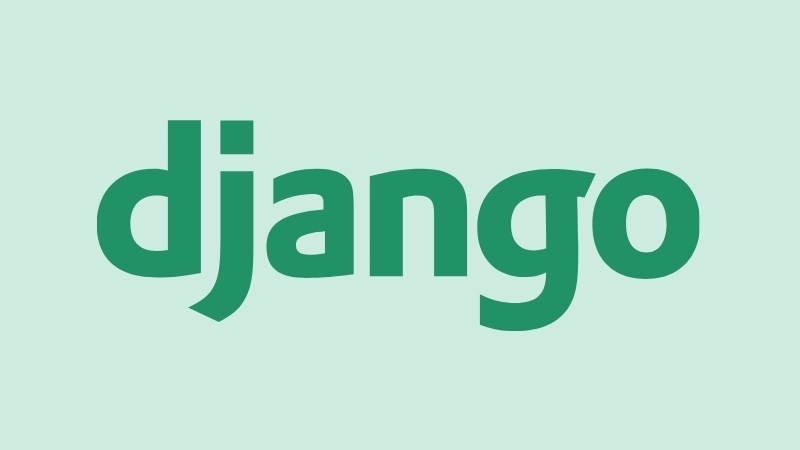
Django is a high-level, open-source framework for Python developers. Known for its simplicity and scalability, it enables rapid development of secure and feature-rich applications. Django follows the “batteries-included” philosophy, offering tools and features right out of the box, making it one of the best backend frameworks of 2025 for Python projects.
Industries/Use Cases
Django is versatile and widely used across various industries—
- E-commerce
- Social Media
- Educational Platforms
- News and Content Websites
Market Demand
Django is in high demand due to Python’s growing popularity. Its ability to build scalable, secure, and fast applications makes it a top contender in the job market demand for backend frameworks.
Popular Apps: Instagram, Pinterest, Mozilla, Disqus.
When to Use
Choose Django for—
- Projects requiring rapid development.
- Applications needing scalability and high security.
- Building complex, data-driven systems.
Key Features
- Comprehensive Admin Panel
- Built-in Security Features
- Object-Relational Mapping (ORM)
- Scalability for High-Traffic Websites
- Flexible Template System
Pros and Cons
| Pros | Cons |
|---|---|
| Rapid development with built-in tools. | Monolithic structure can limit customization. |
| High-level security standards. | Feels heavy for small projects. |
| Active and supportive community. | |
| Scalable for large projects. |
3. Laravel

Laravel is a popular PHP framework known for its elegant syntax and developer-friendly features. It simplifies tasks like routing, authentication, and caching, making it ideal for rapid development of robust web applications. With a rich ecosystem and tools like Laravel Forge and Nova, Laravel is often featured among the top frameworks for developers in modern PHP development.
Laravel is widely used for content management systems (CMS) and other robust web applications. If you’re wondering how a CMS differs from an LMS and which suits your needs, check out this guide on LMS vs. CMS.
Industries/Use Cases
Laravel is well-suited for a variety of industries—
- Small-to-Medium Businesses
- Startups
- Content Management Systems (CMS)
- E-commerce Platforms
Market Demand
Laravel is highly demanded among PHP developers due to its simplicity, versatility, and strong community support. It’s wide range of built-in tools make it one of the most trending backend frameworks for small and medium-scale projects.
Popular Apps: Invoice Ninja, Alison, MyRank.
When to Use
Choose Laravel for—
- Rapid prototyping and development.
- Projects requiring robust backends with minimal effort.
- E-commerce or CMS platforms.
Key Features
- Blade Templating Engine
- Built-in Authentication and Authorization
- Task Scheduling with Cron Jobs
- Eloquent ORM for Database Management
- Artisan CLI for Command Line Tasks
Pros and Cons
| Pros | Cons |
|---|---|
| Elegant syntax and easy to learn. | Slower performance for large-scale apps. |
| Rich ecosystem with pre-built tools. | Can feel heavy for small, simple projects. |
| Active and supportive community. | Requires hosting environments supporting PHP. |
| Excellent documentation and tutorials. |
4. Ruby on Rails
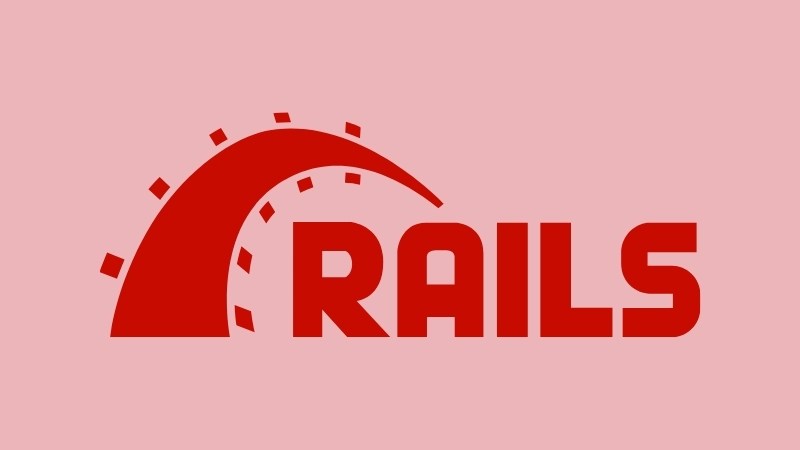
Ruby on Rails, often called Rails, is a powerful framework built on the Ruby programming language. Known for its simplicity and “Convention over Configuration” approach, it enables rapid development of robust and scalable web applications. Its focus on developer productivity and ease of use makes it one of the top frameworks for developers, especially for startups and small businesses.
Industries/Use Cases
Ruby on Rails is widely used across industries such as—
- Startups
- Software-as-a-Service (SaaS) Platforms
- Marketplaces
- Collaborative Tools
Market Demand
Rails remains in steady demand, particularly among startups, due to its ability to quickly deliver fully functional applications. While newer frameworks are emerging, Rails still ranks high in job market demand for backend frameworks for its productivity and versatility.
Popular Apps: Shopify, GitHub, Basecamp, Airbnb.
When to Use
Choose Ruby on Rails for—
- Rapidly launching startup ideas.
- SaaS platforms needing quick iterations.
- Projects with small teams focused on developer efficiency.
Key Features
- Convention Over Configuration (CoC) Philosophy
- Built-in ORM with Active Record
- Scaffolding for Quick Prototyping
- Rich Ecosystem of Gems (Libraries)
- Emphasis on Testing and Automation
Pros and Cons
| Pros | Cons |
|---|---|
| Rapid development and high productivity. | Slower performance compared to newer frameworks. |
| Developer-friendly with clean syntax. | Not ideal for highly customized solutions. |
| Strong community and ecosystem of gems. | Less suitable for real-time applications. |
| Encourages best coding practices. |
5. Express.js

Express.js is a minimalist, fast, and flexible web application framework for Node.js. Known for its simplicity, it is widely used to build APIs and lightweight web applications. Its unopinionated design allows developers to create highly customized solutions, making it one of the trending backend frameworks for modern development.
Industries/Use Cases
Express.js is commonly used across industries like—
- Real-Time Applications
- APIs and Microservices
- Streaming Platforms
- E-commerce
Market Demand
Express.js is in high demand due to Node.js’s widespread adoption. Its speed and flexibility make it a top choice among the best backend frameworks of 2025, especially for developers building scalable, high-performance applications.
Popular Apps: Uber, Accenture, MySpace.
When to Use
Choose Express.js for—
- Building RESTful APIs.
- Real-time applications like chat or streaming platforms.
- Lightweight and scalable projects.
Key Features
- Middleware Support for Functionality Customization
- Minimalistic and Unopinionated Framework
- High Performance with Non-blocking I/O
- Easy Integration with Other Libraries
- Works Seamlessly with Front-End Frameworks
Pros and Cons
| Pros | Cons |
|---|---|
| Lightweight and fast. | Requires additional libraries for advanced features. |
| Highly flexible and customizable. | Can feel too minimal for beginners. |
| Ideal for scalable and real-time applications. | |
| Strong community and extensive resources. |
6. Flask

Flask is a lightweight and flexible Python framework for building web applications and APIs. It’s minimalist by design, allowing developers to have full control over the application architecture. Flask is beginner-friendly yet powerful enough to handle complex applications, making it one of the popular backend frameworks for small and medium-scale projects.
Industries/Use Cases
Flask is commonly used in—
- APIs and Microservices
- Prototyping and MVPs (Minimum Viable Products)
- Lightweight Web Applications
- Data-Driven and Machine Learning Applications
Market Demand
Flask is highly demanded due to Python’s growing popularity and its role in AI, ML, and API development. Its flexibility and ease of use make it a preferred choice for developers needing rapid development and customization.
Popular Apps: Netflix, Reddit (specific components), Lyft.
When to Use
Choose Flask for—
- Small to medium-sized projects.
- Building RESTful APIs and microservices.
- Applications requiring fast prototyping.
Key Features
- Minimalistic and Unopinionated Design
- Built-In Development Server and Debugger
- Extensible with Libraries and Plugins
- Asynchronous Request Handling
- Strong Integration with Python’s Ecosystem
Pros and Cons
| Pros | Cons |
|---|---|
| Lightweight and easy to learn. | Limited built-in features for larger projects. |
| Highly flexible and customizable. | Requires manual setup for advanced functionality. |
| Excellent for small and rapid development projects. | Not ideal for large-scale, complex systems. |
| Strong community and extensive documentation. |
7. Spring Boot
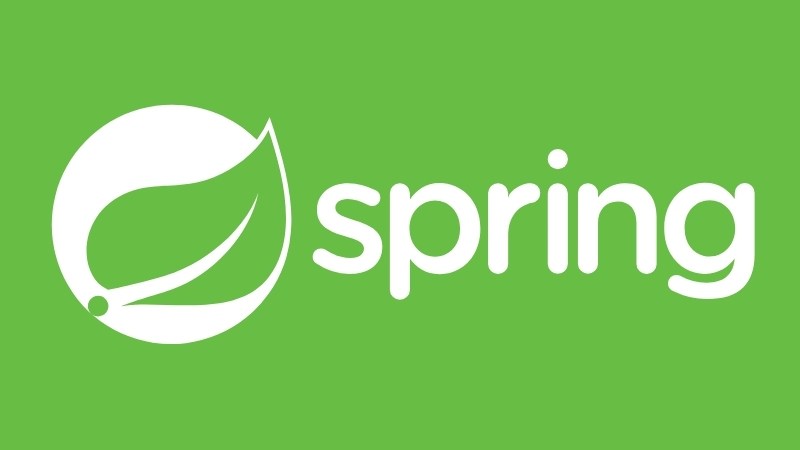
Spring Boot is a powerful, open-source Java framework designed to simplify the development of enterprise-grade applications. It eliminates boilerplate code and configuration, making it easier to create scalable and production-ready systems. Known for its robustness, it’s a leading choice among the most in-demand backend frameworks.
Spring Boot is especially suited for fintech applications where security and performance are critical. To learn more about safeguarding fintech apps, check out this guide on fintech app security solutions.
Industries/Use Cases
Spring Boot is ideal for—
- Enterprise Systems
- Banking and Financial Applications
- E-commerce Platforms
- Healthcare Management Systems
- Microservices Architecture
Market Demand
Spring Boot is highly demanded in enterprise environments, where Java remains dominant. Its ability to build scalable, secure, and reliable applications ensures its relevance in industries with complex, high-traffic systems.
Popular Apps: Intuit, Netflix backend services, Zillow.
When to Use
Choose Spring Boot for—
- Large-scale, enterprise-grade systems.
- Applications requiring high security and performance.
- Microservices and distributed architectures.
Key Features
- Auto-Configuration for Quick Setup
- Built-In Tools for Microservices Development
- Robust Security and Authentication Features
- Extensive Testing Support
- Seamless Integration with Java Ecosystem
Pros and Cons
| Pros | Cons |
|---|---|
| Highly scalable and reliable. | Steep learning curve for beginners. |
| Strong focus on security. | Can be resource-intensive for small systems. |
| Excellent for microservices and large systems. | Requires familiarity with Java. |
| Active community and rich documentation. |
8. Koa

Koa is a lightweight and modern web framework designed for Node.js. Created by the same team behind Express.js, Koa offers a more refined and minimalist approach to building APIs and web applications. It is highly valued among trending backend frameworks for its modular design and async-first capabilities.
Industries/Use Cases
Koa is best suited for—
- APIs and Microservices
- Lightweight Web Applications
- Real-Time Applications
- Prototyping Modern Projects
Market Demand
Koa is growing in popularity as a modern alternative to Express.js. Developers appreciate its improved middleware handling and enhanced error management, making it an emerging choice in the best backend frameworks of 2025.
Popular Apps: Koa is used in smaller, modern applications and startups, though large-scale use cases are still emerging.
When to Use
Choose Koa for—
- Building lightweight and flexible APIs.
- Applications need better error handling and async support.
- Modern projects require a minimalist framework.
Key Features
- Middleware Chaining with Improved Error Handling
- Built-In Async/Await Support for Cleaner Code
- Minimalistic Design for Custom Solutions
- Highly Flexible Architecture
- Lightweight Framework for Fast Development
Pros and Cons
| Pros | Cons |
|---|---|
| Lightweight and highly flexible. | Smaller community compared to Express.js. |
| Async-first design for modern JavaScript. | Requires more effort to set up compared to opinionated frameworks. |
| Better error handling with middleware. | Limited built-in tools; relies on third-party packages. |
| Ideal for custom and scalable solutions. |
9. Phoenix

Phoenix is a modern, high-performance web framework built with the Elixir programming language. It is designed for creating scalable, fault-tolerant, and real-time applications. Leveraging Elixir’s concurrency and functional programming features, Phoenix is gaining traction among popular backend frameworks for projects requiring exceptional speed and reliability.
For insights on outsourcing fintech development, check out Fintech Development Outsourcing.
Industries/Use Cases
Phoenix excels in—
- Real-Time Messaging Applications
- Collaborative Tools (e.g., live editing, shared workspaces)
- Fintech Platforms
- High-Concurrency Applications
Market Demand
Phoenix is growing in demand for its ability to handle real-time communication and high-concurrency workloads. While it has a niche market, it is increasingly recognized among the most in-demand backend frameworks for fintech and real-time systems.
Popular Apps: Discord (some components), Bleacher Report.
When to Use
Choose Phoenix for—
- Real-time features like messaging, notifications, or live updates.
- Projects requiring high scalability and fault tolerance.
- Applications benefiting from Elixir’s concurrency model.
Key Features
- Real-Time Communication with Channels
- High Concurrency with Elixir’s BEAM VM
- Functional Programming Paradigm
- Fault-Tolerant and Resilient Design
- Built-In WebSocket Support
Pros and Cons
| Pros | Cons |
|---|---|
| Exceptional real-time communication support. | Smaller community compared to mainstream frameworks. |
| Highly scalable for high-concurrency systems. | Steeper learning curve due to Elixir’s functional programming. |
| Fault-tolerant and resilient applications. | Limited resources and third-party libraries. |
| Modern, clean design. |
10. FastAPI

FastAPI is a modern Python framework designed for building APIs quickly and efficiently. Known for its speed and developer-friendly features, it leverages asynchronous programming and automatic validation to simplify development. FastAPI is highly regarded among the trending backend frameworks for projects involving AI, machine learning, and data-driven systems.
Industries/Use Cases
FastAPI is ideal for—
- RESTful APIs
- AI and Machine Learning Applications
- Data-Driven Applications
- Microservices Architecture
Market Demand
FastAPI’s demand is growing rapidly due to its performance and simplicity. Its async capabilities make it a preferred choice in the job market demand for backend frameworks for modern Python-based projects.
Popular Apps: Uber’s API Gateway, Microsoft’s Machine Learning Tools.
When to Use
Choose FastAPI for—
- Projects focused on building APIs quickly.
- Applications requiring high performance and async features.
- Integration with AI and machine learning models.
Key Features
- Asynchronous Programming for High Performance
- Automatic Validation and Documentation (using OpenAPI and JSON Schema)
- Strong Integration with Python Libraries
- Developer-Friendly Design with Minimal Code Overhead
- Scalable and Ready for Production
Pros and Cons
| Pros | Cons |
|---|---|
| Fast and efficient with async support. | Primarily suited for APIs, not full-stack development. |
| Automatic documentation generation. | Smaller community compared to older frameworks. |
| Easy to learn and developer-friendly. | Limited third-party tools compared to Django or Flask. |
| Strong integration with AI/ML workflows. |
Industry Trends Driving Demand
Several trends are shaping the demand for backend frameworks. These trends highlight how technology is evolving to meet modern needs and expectations, making it crucial for developers to stay updated with backend technologies for scalability and efficiency. Here are some popular trends—
1. Popularity of Microservices and Container-Based Architectures
Microservices break applications into smaller, independent services. This makes them easier to build, scale, and maintain. Container tools like Docker and Kubernetes help developers deploy these microservices efficiently. Frameworks that support microservices architecture are in high demand because businesses want scalable and flexible systems.
2. Increased Demand for Real-Time Applications
Real-time apps like chat platforms, online gaming, and live streaming are booming. Users expect seamless communication and instant updates. Trending backend frameworks that handle WebSocket communication and real-time data processing are essential for delivering these experiences.
3. Integration with AI and ML Technologies
AI and machine learning are transforming industries. Backend frameworks that can integrate with AI models and process large datasets are becoming crucial. They enable applications to offer smarter features like recommendations, chatbots, and predictive analytics. Frameworks like Django and FastAPI are often considered among the best backend frameworks of 2025 for these advanced use cases.
4. Adoption of Cloud-Native Development Practices
More companies are building applications directly for the cloud. This allows for better scalability, performance, and cost-efficiency. Frameworks optimized for cloud-native development, such as those that integrate with serverless computing and container orchestration, are in high demand.
Trends like microservices, real-time applications, and cloud-native development are shaping the future of backend frameworks. For a deeper look into what lies ahead, explore this guide on the future of web development.
How to Choose the Right Backend Framework for Your Needs?

Selecting the most in-demand backend framework depends on aligning it with your project’s specific goals. Here’s what to consider—
- Project Requirements: Highlight factors like scalability, security, and real-time capabilities.
- Team Expertise: Suggest choosing a framework that matches the team’s skill set (e.g., Python for Django, Java for Spring Boot).
- Budget Constraints: Mention cost considerations, like hosting or development time.
- Future Scalability: Encourage readers to pick frameworks that can grow with their application.
- Community and Support: Emphasize the importance of a strong developer community for troubleshooting and resources.
Choosing the right backend framework is just one step in your development journey. To explore the full path of becoming a successful web developer, check out this comprehensive web development roadmap.
How BoomDevs Can Help You
Backend development can be challenging, but you don’t have to do it alone. BoomDevs is here to guide you every step of the way, whether you’re a beginner learning the ropes or a business building a scalable application.
Why Choose BoomDevs?
- Clear Guidance: We help you choose the best backend framework for your needs.
- Skill Building: Learn in-demand frameworks with step-by-step tutorials and resources.
- Expert Support: Get advice from industry professionals whenever you need it.
- Community Access: Join a supportive network of developers to share ideas and solve problems.
Ready to Get Started?
BoomDevs makes backend development simpler, smarter, and more efficient.
Reach out to BoomDevs today!
Let’s turn your ideas into reality.
Final Thought
Choosing most in-demand backend framework is crucial for building modern, scalable, and efficient applications. These frameworks not only power successful projects but also open doors to exciting career opportunities for developers.
The right framework impacts your application’s performance and scalability. Staying updated on trending backend frameworks and selecting tools that align with your goals can make all the difference.
Your choice of a backend framework isn’t just a technical decision—it’s an investment in the future success of your project or career.
Read More Articles:
Top 10 Mobile App Development Frameworks



